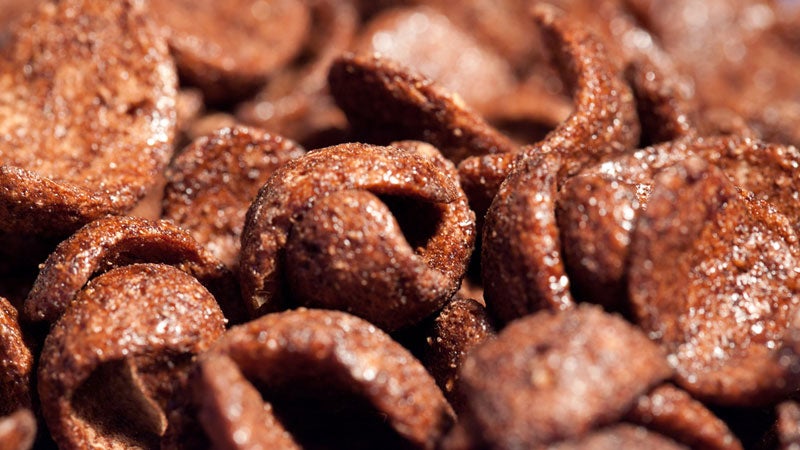You are eating more than you think you are. And the size of your frosted flakes is to blame. .
тАЬThere are a lot of physical properties that affect our perception of how much food we are taking in,тАЭ says Barbara Rolls, professor of nutritional and the Helen A. Guthrie Chair at The Pennsylvania State University.
To test our ability to determine portion size, Rolls and researchers at Penn State used a rolling pin to systematically crush one variety of cereal with big flakes, reducing the volume of the cereal to 80, 60, or 40 percent of standard size.┬а The smaller the volume, the more weight could fit in a recommended serving size.
Then they asked 41 adults to eat cereal once a week for four weeks, handing out opaque containers of the cereal crushed into the different volumes. Participants were allowed to pour their own portions into a bowl, then eat as much as they wanted.
As the size of the flakes got smaller, eaters poured a smaller volume of the cereal, but they took quite a bit more by energy contentтАФread: caloriesтАФand weight. The smaller the flake size, the more calories in. At the same time, they thought that they had taken in about the same number of calories across all volumes of cereal.
In other words, weтАЩre not good at eyeballing, so you may want to find another method to measure your portion size. тАЬGet a simple, inexpensive food scale and see how a given weight looks in terms of volume,тАЭ Rolls says. тАЬLook at weight density. If you know you should be eating 300 calories of cereal for breakfast, itтАЩs your responsibility to figure out what that looks like.тАЭ
But Rolls doesnтАЩt recommend against eating cerealтАФor even suggest that you should switch from say, granola to something with bigger pieces. тАЬI wouldnтАЩt say you shouldnтАЩt eat something,тАЭ she says. тАЬAs soon as you say that, want it all the more.тАЭ


